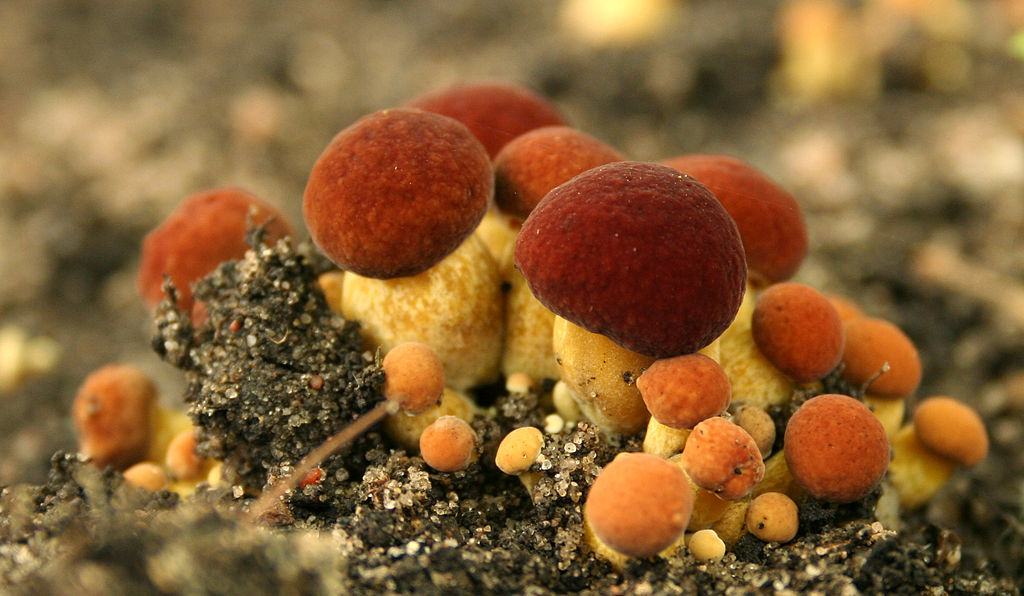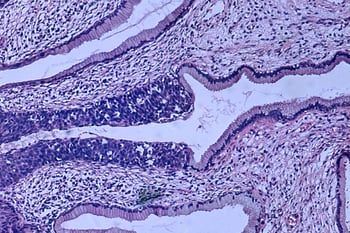The Department of Biochemistry at the University of Wisconsin–Madison is home to a large collection of imaging equipment and facilities, including the Biochemistry Optical Core (BOC). The BOC provides state-of-the-art instrumentation for light and fluorescence based microscopy, including epifluorescence, confocal, and super-resolution imaging. Now UW-Madison is adding another piece of equipment to their state-of-the-art imaging arsenal: a cryo-electron microscopy (cryo-EM) facility.
Read MoreTags: University of Wisconsin, University of Wisconsin Madison, UWisc, UW Madison, Research Funding, Laboratory Equipment Supplier, Lab Product Sales, BioResearch Product Faire, Laboratory product sales, 2017 research funding
 Fungi can be found throughout nature, from moldy food forgotten in the fridge to mushrooms growing in the forest. Scientists know that these diverse plethora of fungi contain useful molecules that can be used in creating new drugs, however extracting complex molecules from fungi is not an easy task and in the past has been a slow process.
Fungi can be found throughout nature, from moldy food forgotten in the fridge to mushrooms growing in the forest. Scientists know that these diverse plethora of fungi contain useful molecules that can be used in creating new drugs, however extracting complex molecules from fungi is not an easy task and in the past has been a slow process.
Tags: Fungi, Wisconsin, University of Wisconsin Madison, UW Madison, BioResearch Product Faire Event
Over 6 million cosmetic surgery procedures are done each year using Botox, a form of the botulinum toxin. However, besides reducing wrinkles, botulinum toxins are used to treat over 20 medical conditions. These include severe neck and shoulder muscle spasms, chronic migraines, excessive sweating, leaky or over active bladders, facial spasms, and Cerebral Palsy. Botulinum toxins are also quite deadly. In fact, one gram--the equivalent to ¼ teaspoon of sugar--could kill over a million people.
Read MoreTags: UW, Wisconsin, University of Wisconsin, University of Wisconsin Madison, UWisc, UW Madison, Biotechnology Vendor Fair, Madison, BioResearch Fair, Bioreseach, 2016, wisconsin science trade fair, University of Wisconsin School of Medicine, Botox, botulinum
 Cervical cancer is the third leading cause of cancer deaths for women worldwide, with more than 500,000 new cases per year. In the United States, however, early screening and HPV vaccine have resulted in a decline in U.S. rates to approximately 12,000 cases annually.
Cervical cancer is the third leading cause of cancer deaths for women worldwide, with more than 500,000 new cases per year. In the United States, however, early screening and HPV vaccine have resulted in a decline in U.S. rates to approximately 12,000 cases annually.
Tags: University of Wisconsin Madison Research Park, cancer research, Wisconsin, UWiscRP, UWisc, Cancer, UW Madison, 2015, BioResearch Product Faire Front Line Event, BioResearch Product Faire Event, Madison
When it comes to identifying the onset of Alzheimer’s disease, every minute counts. Often it’s not even possible to determine whether a person is afflicted with it until it’s too late: that is, once symptoms start to show. A promising study at the University of Wisconsin, Madison suggests that there exists a way to diagnose Alzheimer’s before the onset of symptoms, not after.
Tags: 2014, Midwest, 2013, WI, Wisconsin, University of Wisconsin, University of Wisconsin Madison, UWiscRP, UWisc, University of Wisconsin Research Park, UW Madison, Alzheimers, BioResearch Product Faire Event, laboratory, Front Line event, lab, Madison, Front Line, lab supplier, researcher
The University of Wisconsin-Madison is a richly-funded science research environment, which is especially evident given recent NSF and NIH research funding statistics. In total, the University of Wisconsin-Madison received $335.9 million in research funding from the NSF and NIH in 2012. The NSF awarded the university $106 million. Of that money, $13.8 million went to bio research projects alone. For our readers’ convenience, we have spotlighted the top five NSF-funded bio research projects broken down by funding program, project title and research funding below.
Tags: 2014, Midwest, 2013, UW, WI, Wisconsin, University of Wisconsin, University of Wisconsin Madison, UWiscRP, UWisc, University of Wisconsin Research Park, UW Madison, bio research, BioResearch Product Faire Event, Research Funding, Front Line event, Madison, Front Line, NIH funding, NSF funding
Wisconsin is universally known for its abundance of milk and cheese products, which establish its reputation as the “Dairy State.” Therefore, it stands to reason that the University of Wisconsin at Madison would have a fantastic Center for Dairy Research (CDR) at the forefront of cheese research. According to the CDR Homepage, this includes studying the functional and physical properties of cheese, create new flavors and varieties of cheeses, and investigate technologies for cheese production, safety, and quality.
Tags: Midwest, 2012, WI, Wisconsin, University of Wisconsin Madison, UW Madison, BioResearch Product Faire Event, Madison
Medical research building construction is underway at the University of Wisconsin-Madison with high hopes for top level research once the three stages of this project have all been completed. The goal for this project, which together will be called the Wisconsin Institutes for Medical Research (WIMR), "is to create a new kind of, almost revolutionary, model for how we do medical research," said Dr. Robert Golden, dean of the UW School of Medicine and Public Health.
Tags: Medical Research, cancer research, 2012, WI, Wisconsin, University of Wisconsin Madison, UW Madison, BioResearch Product Faire Event, Madison, construction

